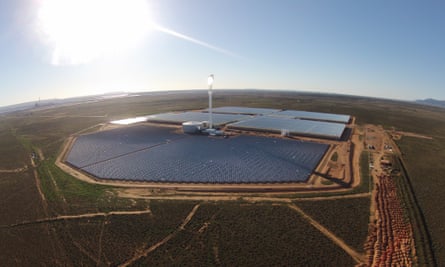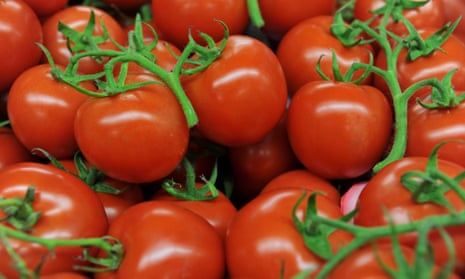Sydney Fresh, Organic Angels, Freshline, Box Fresh. It’s a wonder Australian supermarkets still stock vegetables, such is the explosion of veg-box delivery services. OK, they may be a bit on the pricey side, but the food is out-of-the-ground fresh, typically free of chemicals and refreshingly wonky.
But for a veg-box scheme to work, the vegetables have to be grown locally. That effectively ruled out the arid wheatbelt towns of Western Australia. Or, it did, before Wide Open Agriculture opened a huge greenhouse-like facility to grow fresh vegetables. Boxes destined for domestic doorsteps have been leaving the Wagin-based site loaded with cucumbers, capsicums, tomatoes and the like.
“We’ve had a lot of anecdotal feedback that we have brought the taste back to vegetables, particularly our tomatoes,” says Ben Cole, executive director at Wide Open Agriculture, the startup behind the initiative. “But our key is selling fresh vegetables in a region that doesn’t have many other local growers.”
The venture is tapping into growing consumer demand for food that is fresh and that doesn’t (environmentally speaking) cost the earth. It uses drip-irrigation technology, for instance, that requires only 10% of the water needed for open-field agriculture. In addition, the 5,400 square metre facility is equipped with a retractable roof and walls that open and close automatically, thus reducing water loss to evaporation.
The water used at the high-tech farm is sourced from natural surface water runoff that is directed into a series of dams before being pumped via a solar-powered system for use in irrigation. By capturing water high in the landscape, Cole argues, the wheatbelt’s first major vegetable producer is able to make use of it before it becomes saline.
“The wheatbelt has seen reductions in rainfall up to 20% over the last 20 years, so water scarcity is an issue for traditional wheat and sheep farmers,” says Cole, who holds a doctorate in environmental engineering and recently exited a successful social enterprise in Vietnam.
Wide Open Agriculture believes its agroecological approach to farming could usher in a new age of vegetable production in the wheatbelt. With its first harvest only just completed, it is already looking to list on the Australian Securities Exchange to raise finance for a second large-scale unit.
Another new player in Australia driving supply of water-smart food is Sundrop Farms. The Adelaide-based firm is the first company in Australia to develop a commercial-scale operation using hydroponic technology.

Pioneered by companies such as BrightFarms and AeroFarms in the US, hydroponic farming requires no soil or natural sunlight. Instead, plants are grown in trays containing nutrient-rich water and encouraged to photosynthesise by low-energy LEDs.
“Hydroponics is a thriving industry right across the globe, with produce being grown in a huge variety of environments” says Philipp Saumweber, a former investment banker who heads up the company. As if to prove the point, Sundrop has located its 65-hectare facility in an area of virtual desert near Port Augusta in South Australia. One of the criticisms of the technology is that it is energy-intensive, what with all those indoor lights and automated heating and cooling systems. Sundrop has successfully ducked that charge by installing a concentrated solar power plant with 23,000 flat mirrors to meet most of its energy needs.
Saumweber is quick to push the water-efficiency credentials of the indoor farm too. With precious little rain or subterranean water to draw on, Sundrop has opted to pump seawater from the ocean and desalinate it. Its renewably powered desalination plant generates around 1 million litres of fresh water every day. The company also uses the seawater as a natural disinfectant, reducing the need for pesticides. None of this comes cheap, mind. Sundrop’s Port Augusta farm cost a reported A$200m. Yet Saumweber insists this high upfront investment will be offset in the long run by lower operational costs, thanks to the use of cheaper renewable energy. What can’t be argued with is the net result: 15,000 tonnes of tomatoes a year from a patch of land that is barely habitable, let alone productive. The prospect of siting such facilities inside cities is also a very real possibility, Saumweber adds. “Because we don’t rely on soil, we can position our farms closer to centres of population to greatly increase the efficiency of our supply chain.” For the most part, however, water-smart technologies such as hydroponics and aquaponics (a related system that uses fish waste as an organic food source for plants) remain the preserve of hobby producers in their backyards.
For Murray Hallam, a Queensland-based expert and lecturer on aquaponics, the sector struggles with being seen as “just for hippies and way-out vegans” – an image he insists is false. A cultural propensity to think “it’ll be all right, mate” also holds back people from taking the risk of water scarcity and climate change seriously with respect to future food production, he argues.
The country is missing a trick, he continues: “In a regular farm, it doesn’t matter how well you organise it, when you irrigate, about 70% of the water evaporates straight away. Then the water that does get into the soil usually ends up going down to the subsoil and leaking away … taking with it the nutrients and fertiliser.”
Two of Hallam’s students have gone on to create multimillion dollar aquaponic businesses: Mecca in South Korea, and WaterFarmers, which has farms in India, Canada and the Middle East. He fears it will take a food crisis for Australian consumers to step up en masse and demand similar innovative solutions from the country’s agricultural industry.
Back amid the wheat fields of Wagin, Cole is more optimistic. Wide Open Agriculture is now looking to break into the local hospitality and retail market. It has opted for the brand name, Food for Reasons. For once a product that says what it is on the tin – or box.

Comments (…)
Sign in or create your Guardian account to join the discussion